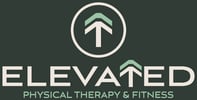The shoulder is a very interesting area of the body, as it is made up of four “joints” and is responsible for many, many visits to physical therapists and orthopedists.
When improperly loaded or in high force situations, the shoulder is very susceptible to injury because of its inherent instability.
Let’s do a quick anatomy review, some important things to remember about improving movement, and when it might be time to see a healthcare provider.

Shoulders: More than Meets the Eye
Many think of the shoulder only as the glenohumeral (GH) joint, or where the arm bone meets the shoulder blade.
Although this joint provides much of the movement, there are three others that are involved as well:
- Acromioclavicular (AC) joint
- Sternoclavicular (SC)
- Scapulothoracic (ST)
That last one isn’t a true joint but is incredibly important for shoulder health and proper mechanics.
Again, the GH is the major player here, but the ST is also a point of emphasis during many rehab protocols. AC and SC joint mechanics are rarely addressed unless they are the direct point of injury, or in a dart throwing situation where other techniques/concepts are not working as well.
So, let’s hone in on the two more common areas of shoulder dysfunction and pain.

Shoulders, Shrugging & "Shoulder Impingement"
The GH and ST joints are responsible for the majority of movement at the shoulder, and when moving well should be going through range of motion at a 2:1 ratio. Many people get into a chicken or the egg scenario where they initiate or power a movement, particularly one that’s overhead, via shrugging to make up for lost motion.
This actually puts the shoulder, and particularly the rotator cuff, at a disadvantage and can sometimes lead to pain, but the pattern is common for those who are already in pain as well.
There are varying stances on “shoulder impingement” which is kind of the catch all, semi made-up diagnosis often given to those with pain who have no obvious structural damage.Below is my general outline when treating someone with shoulder pain.
I have a particular interest in treating shoulders, as it is the only body part I’ve had a surgery on and have experienced from the patient side post surgically. I strive to provide the care I wish I got then, which requires looking beyond the GH joint and “overactive” upper traps.
The thoracic spine is absolutely key, because it is the base of all that movement, and must have the proper mix of mobility and stability. Once that base is moving how we’re hoping, it’s time to turn our attention to that scapulohumeral rhythm I alluded to above.
If you’re shrugging your way through movements and its symptomatic at any point, we have to correct mechanics to help smooth out the rhythm. My personal take is to find the position and movement pattern that works best for you and strengthen through a mildly uncomfortable range of motion until it becomes more comfortable, then continue to progress that.
I don’t even know if it’s very fair to call that my personal take, because that progressive overload is a relatively basic principle in performance training and rehab.

When to Seek Physical Therapy for Your Shoulders
If you’ve been dealing with pain for more than a week or two, have trouble reaching your arm above shoulder height, or are experiencing pain that goes beyond one joint away (such as pain/tingling into the hand), it’s likely time to see a medical professional. We can help you with that.
The Elevated Experience is 1:1 with a Doctor of Physical Therapy for a full hour. We will look not only at the shoulder, but joints above and below to be sure there aren’t other problem areas that are causing pain or an unfortunate side effect of it.
If you’ve been having shoulder pain (or any other pain for that matter), contact us to inquire about our free screening.




Comments